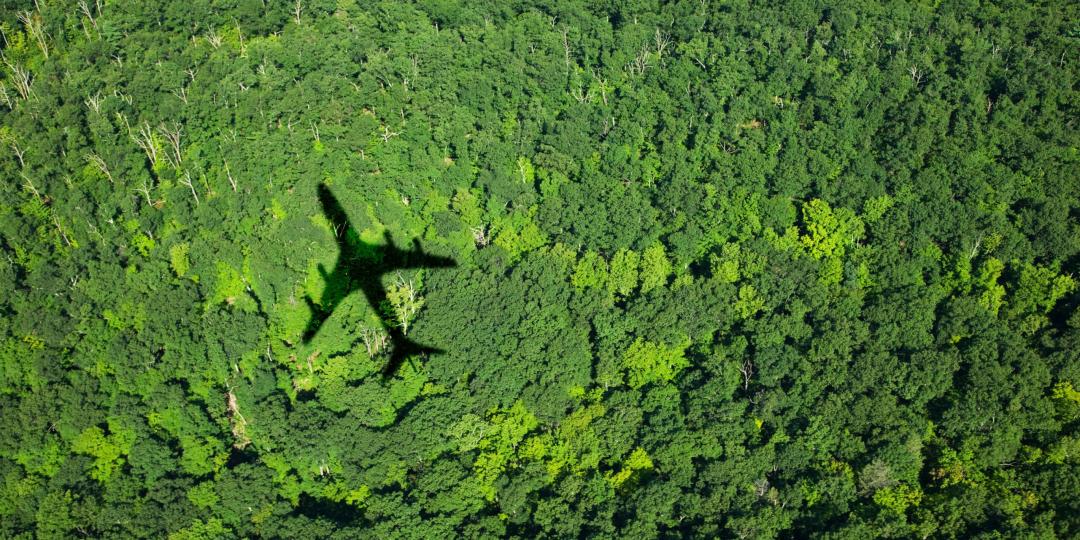The global aviation industry faces a seemingly insurmountable task in achieving nett zero carbon emissions by 2050.
With global tourism set to double by 2050 from 2019 levels, current strategies that rely solely on carbon offsetting, technological efficiencies and biofuels are woefully inadequate, according to the Envisioning Tourism in 2030 report by the Travel Foundation – a UK-based sustainability specialist – in collaboration with Centre of Expertise, Leisure, Tourism & Hospitality (CELTH), the Breda University of Applied Sciences, the European Tourism Futures Institute, the Netherlands Board of Tourism and Conventions, as well as a broad range of businesses, tourism destinations and other stakeholders across the world.
Such measures alone will fail to meet the Paris Agreement-aligned goals to halve emissions by 2030 and achieve nett zero emissions by 2050 at the latest, the report states. Instead, global policymakers and climate planners are urged to combine all those measures with significant investments and incentives for bringing forth the greenest forms of transport and limits on those that are the most polluting.
This is the only scenario that can provide comparable levels of revenue and opportunities to travel in a decarbonising world, the soon-to-be-released report finds.
It will require trillion-dollar investments in all available decarbonisation measures and by prioritising trips that can reduce emissions most readily – for instance, those by road and rail.
Some limits must also be applied to aviation growth until it is fully able to decarbonise: in particular, capping the longest-distance trips to 2019 levels. These made up just 2% of all trips in 2019 but are by far the most polluting. If left unchecked, they will quadruple by 2050, accounting for 41% of tourism’s total emissions (up from 19% in 2019), and yet still just 4% of all trips.
No more business as usual
“It’s clear that business as usual for tourism is neither desirable nor viable. Climate impacts are already here, increasing in frequency and severity, with monumental costs for humanity and the environment that affect tourism more than most other sectors. Current decarbonisation strategies will reach nett zero far too late. So we must reshape the system,” says Menno Stokman, Director of CELTH.
“From a climate perspective, once we reach nett zero, we can travel as much as we like. Shifts in investment will get us there within a decade for shorter-distance trips. But for long-haul, we need more time, and we should take this into account as tourism plans its future,” Stokman adds.
A global co-ordinated response also needs to address the existing inequity within the tourism system. Many countries, particularly those in the Global South, have yet to fully develop their tourism economies and will have fewer resources to invest in green infrastructure. And some destinations, such as island nations, which are both more susceptible to the impacts of climate change and most dependent on tourism and long-haul visitors, must be the first to be supported.
“As always, the risk is that the most vulnerable people and nations – those that did the least to cause climate change in the first place – will lose out,” says Jeremy Sampson, CEO of the Travel Foundation. “We must not exacerbate the existing system, which often fails to yield fair outcomes for host communities. Instead, tourism’s coming transformation is the sector’s opportunity to make good on its promise to be a catalyst for positive change once and for all.”
The report supports the Glasgow Declaration on Climate Action in Tourism, a UN-led initiative supporting the Paris Agreement goals, which the Travel Foundation helps implement.
Objective referees should judge aviation
Iata and Airlines for Europe (A4E) have also weighed in, urging EU Transport Ministers to cut Air Traffic Management (ATM) carbon emissions and submit performance to review from an independent regulatory authority.
The idea is not a new one. A 2020 proposal from the European Commission calling for a fully independent regulator to assess the performance of the various European Air Navigation Service Providers (ANSPs) was recently rejected by European member states.
The Parliament, in line with the commission’s proposal, has pushed for tougher regulation, but airlines fear a last-minute unsatisfactory compromise that will enable states to be judge and jury on the targets for their own ANSPs, how they should be monitored, and what their success will look like.
“Teams at the World Cup expect independent referees: ATM should be no different. The 2020 commission proposals were clear that countries shouldn’t be marking the homework of their own air navigation service providers – they should submit their performance to be judged by an independent body, setting transparent and efficient targets to help cut emissions and delays,” says Rafael Schvartzman, Iata Regional VP for Europe.
The imperative to find carbon emissions savings has also generated new momentum for reform, Iata asserts.
“At a time when politicians lecture aviation on a regular basis for its climate impact, it is outrageous that they refuse to push for reforms that could deliver up to 10% emissions reductions in European airspace,” Thomas Reynaert, MD of A4E, points out.























